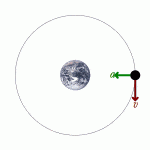Types Of Learning
What are the different types of learning? In life, we have the goal to be the best we can be. In order to do this, we should be able to know and understand the best ways to learn. This doesn’t only pertain to academics. There are many other things and types of learning that we should know to be able to effectively learn and absorb what we need to be successful in life. The main types of learning are perceptual learning, motor learning, relational learning, spatial learning, episodic learning, observational learning and many others.
Perceptual types of learning are basically having the ability to absorb information by recognizing things that one has seen before. The main object in these types of learning is to be able to identify objects as well as situations. Then, you should be able to identify the changes in the brain. Basically, perceptual learning are types of learning that involves being able to learn about things, what to do, and what not to do with them. When something in our sensory system changes, the perceptual learning will allow us to detect it and teach the body the actions to take. There are different types of learning under this category. These are visual learning and auditory learning. Visual learning is being able to learn with what you see, while auditory learning is being able to learn with what you hear. When we were in school, we make use of these types of learning. When a teacher is in front of us, we see him or her discussing the lesson for the day. Then, we listen to what he or she is saying so as to understand what the lesson is.
Stimulus response learning, as the name implies, is learning by stimuli. When certain stimuli are present, our brain will make us do something or makes us be of a certain behavior. Basically, the stimulus response type of learning pertains to the connections between the motor system and the sensory system of the body. Classical conditioning pertains to the types of learning wherein there is association between the two presented stimuli. Instrumental conditioning, on the other hand, associates the response with the stimuli. Therefore, making us change our behavior as we have already learned the consequences of the scenario. Examples of instrumental conditioning are punishment and reinforcement.
Another one of the types of learning are motor learning. This is basically making the brain recognize the changes in the body’s motor system. Relational learning, on the other hand, is being able to learn by comparison. Our brain should be able to connect, compare, and contrast the different matters at hand. Spatial learning are types of learning that involves being able to relate the factors that affect the stimuli. Episodic leaning are learning processes that entail being able to remember and retain in our brain the events that we witness in our own eyes. Lastly, we have observational learning. As the name implies, these are basically being able to remember, retain, and learn from observation. By watching other people, we are learning observationally. By imitating other people, we are as well learning the same way.






